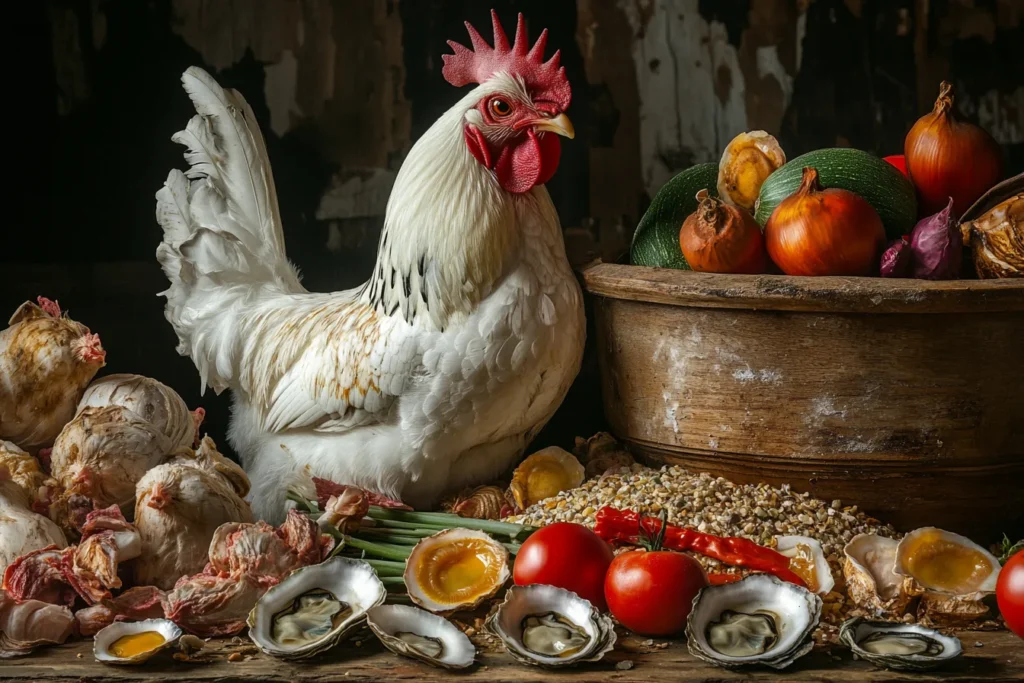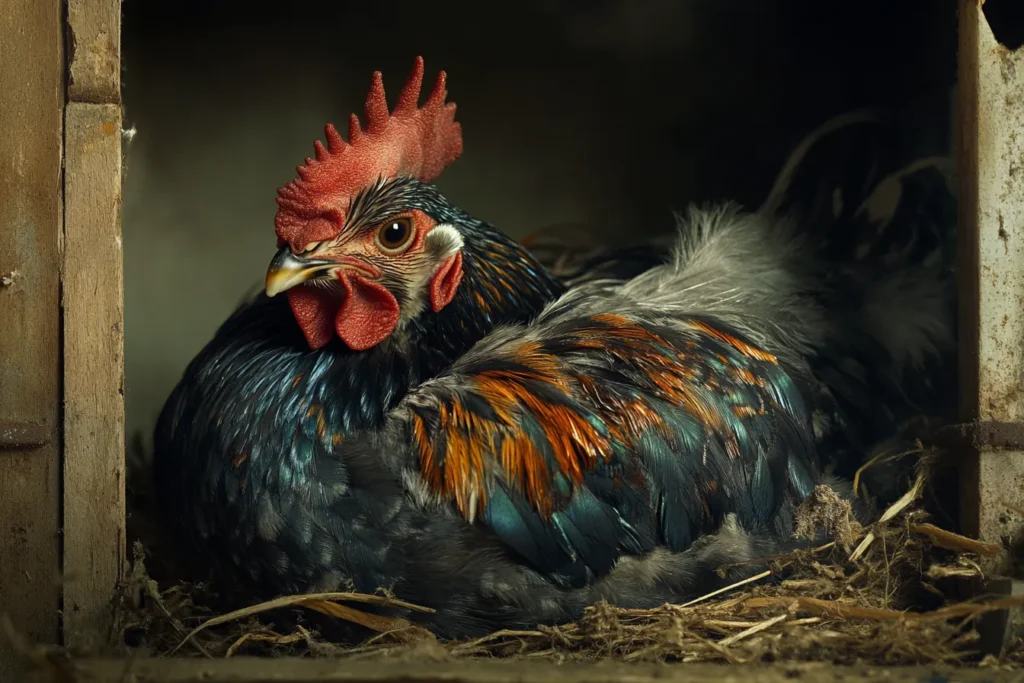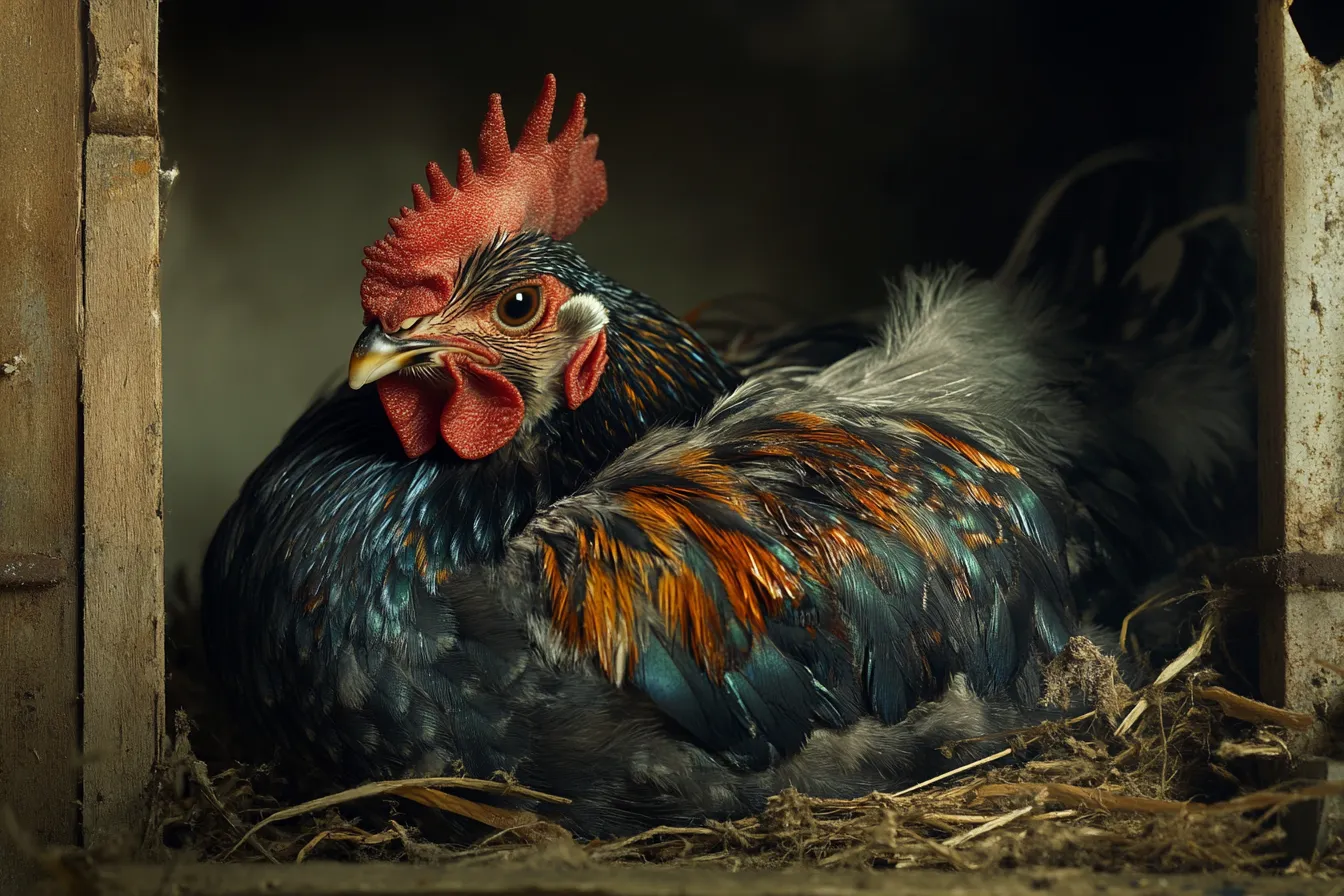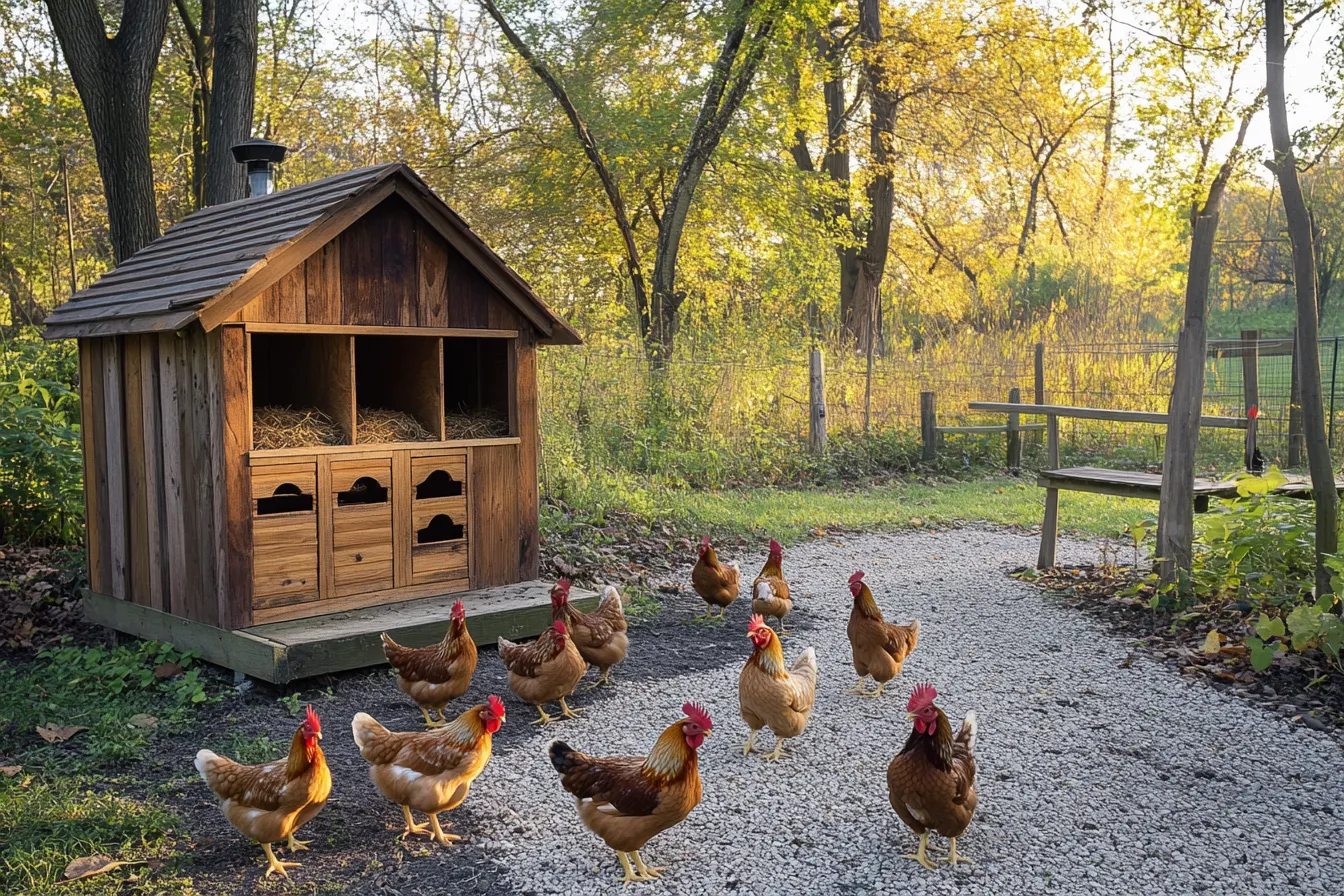Table of Contents
Introduction
Backyard chickens are all the rage these days. Whether you’re raising them for eggs, fun, or simply because they’re adorable little feathered companions, people are adding chickens to their homes more than ever before. But not just any chicken — enter the majestic, jaw-dropping beauty known as the Sapphire Splash Chicken 💎🐔
Why is this breed creating such a buzz?
It’s got the looks, the personality, and yes — the eggs. This isn’t your average bird. With its bluish-gray feathers sprinkled with snowy white “splashes,” it’s basically the supermodel of the chicken coop world.
🗣️ “It looks like someone painted it with the sky and clouds,” says one backyard chicken keeper from Oregon. “It’s the prettiest bird I’ve ever owned.”
In this fun and informative guide, we’re going to break down everything you need to know about this rising superstar in the poultry world — from its origin story to daily care, nutrition, personality, and even the common problems you might run into. So grab your coffee and your egg basket, and let’s dig in!
What is a Sapphire Splash Chicken?
Okay, let’s start with the basics. The Sapphire Splash Chicken is a hybrid chicken breed — a designer bird, you could say. It’s not a recognized heritage breed like the Rhode Island Red or the Plymouth Rock. Instead, it’s a modern mix crafted specifically to be beautiful, hardy, and a good layer.
Origins and Genetics of the Sapphire Splash
The Sapphire Splash is believed to be a variation of the Sapphire Gem Chicken, a breed developed by hatcheries using Barred Plymouth Rocks and Blue Plymouth Rocks — both known for their productivity and calm temperament…Royal Chicken
What sets the Sapphire Splash apart? Well, it’s mostly in the genes. Breeders select for a unique feather pattern and coloring — hence the word “splash” in its name.
🐣 “Think of it as the artsy cousin of the Sapphire Gem,” says poultry expert Karen LaCluck of BackyardChickens.com.
What Makes it “Splash”? Color & Pattern Explained
Ever seen a sky at dawn when the clouds are scattered with silver and white? That’s kind of what a Sapphire Splash looks like. It has a blue-gray base color with irregular white feathering that seems to splash across its body — every bird is slightly different, which makes each one unique!
Unlike some other breeds that have solid or barred feathering, these birds have what’s called a “splash” pattern — and it’s as delightful as it sounds.
Why Chicken Lovers are Obsessed with Sapphire Splash Chickens
We’re not just talking about a pretty face here. The Sapphire Splash offers so much more than just Instagram-worthy feathers…Chicken Back
Their Striking Appearance and Unique Look
People are drawn to the Sapphire Splash because, well, they’re gorgeous. They stand out in a flock and make your coop look like a curated boutique of birds.
They also have:
- Bright, intelligent eyes 👀
- A slightly upright posture
- Clean legs (no feathers on feet)
- A small to medium single comb
Their feathers shimmer slightly in the sun, adding to their already photogenic nature.
Friendly Personality and Behavior
Looks aside, these birds are known to be gentle and friendly, making them ideal for families with kids. They’re often described as:
- Calm around people
- Curious but not flighty
- Easy to handle
- Good with other flock members
🧒 “My 7-year-old can pick her up like a puppy,” one parent said. “We named her Elsa because she looks like she belongs in Frozen.”
It’s safe to say the Sapphire Splash is just as delightful in personality as it is in plumage.
Egg Production: Are They Good Layers?
Absolutely. These aren’t just pretty backyard pets — they’re productive too! On average, a healthy Sapphire Splash hen can lay around 250–290 medium to large brown eggs per year. That’s about 5 eggs per week!
Not bad, right?
And here’s the kicker — they tend to keep laying through cooler months better than some other breeds.
Here’s what a basic nutritional profile for egg-laying hens like the Sapphire Splash looks like:
Nutrition Table for Optimal Egg-Laying
| Nutrient | Daily Requirement | Purpose |
|---|---|---|
| Protein | 16–18% | Egg development, feather health |
| Calcium | 4–5g | Strong eggshells 🥚 |
| Phosphorus | 0.4% | Metabolism and bone strength |
| Vitamin D3 | 1,000 IU/kg | Absorption of calcium |
| Omega-3 | Optional (supplemental) | Healthier eggs and brain support |
| Fresh Water | Always available | Hydration and digestion 💧 |
🚨 “A lack of calcium can lead to weak eggshells or even egg binding — always provide a layer feed and crushed oyster shells!”

Raising Sapphire Splash Chickens: Basic Care Guide
These birds may look like high-maintenance showgirls, but don’t let the glam fool you. They’re actually pretty easy to raise, even if you’re new to chickens. That said, like all pets, they still need the right environment, nutrition, and attention to stay healthy and productive.
Best Housing and Coop Setup for Sapphire Splash
Sapphire Splash chickens aren’t picky, but they do appreciate space and comfort. Make sure your coop setup meets these essentials:..Chicken Breast
- Minimum Coop Space: 4 sq. ft. per bird inside the coop
- Minimum Run Space: 8–10 sq. ft. per bird in the outdoor run
- Ventilation: A must! Keeps humidity and ammonia buildup low
- Nesting Boxes: One box for every 3–4 hens is ideal
- Roost Bars: At least 8–10 inches of perch space per chicken
🏠 “A well-ventilated, predator-proof coop is the key to happy hens. It’s their fortress, not just their home.” — backyardchickens.net expert
Bonus: These birds love to roam. If you can, give them some free-range time in a secure yard. You’ll get happier birds and richer egg yolks 🥚🌿
Ideal Feed and Nutrition Requirements
Feeding your Sapphire Splash the right way means:
- Layer feed with 16–18% protein
- Crushed oyster shells for calcium (separate bowl)
- Fresh fruits and veggies for treats (in moderation)
- Clean, fresh water every single day
Don’t rely on kitchen scraps alone. Balanced feed is key if you want solid egg output.
Nutrition Table Recap (Daily per Hen)
| Food Type | Amount | Why It Matters |
|---|---|---|
| Layer Pellets/Crumbles | 1/4 lb per hen | Balanced protein + calcium |
| Oyster Shells | Free choice access | Prevents weak eggshells 🥚 |
| Grit (if free-ranging) | Free choice access | Helps digestion |
| Veggie Treats | 10–15% of total diet | Enrichment and vitamins |
| Water | Constant access | Essential for all functions 💧 |
🧠 “If the feed smells musty or looks moldy — toss it. Bad feed equals sick chickens.”
Daily Care Routine and Time Investment
Think chickens are too much work? Not really! Here’s a sample care routine for your Sapphire Splash:
Daily Checklist:
- ✅ Feed and water (5–10 minutes)
- ✅ Check egg boxes (collect eggs)
- ✅ Quick coop check (safety, pests, general health)
- ✅ Let them out into the run or yard
🗓️ Weekly Checklist:
- Clean coop bedding
- Look for signs of mites or lice
- Monitor food levels and restock
Once you’re in the groove, daily care becomes as natural as walking your dog.
Common Problems with Sapphire Splash Chickens
Just like any living creature, even these dazzling birds can face a few bumps in the road. The key is knowing what to expect — and how to fix it fast…Chick-fil-A Breakfast
Problem 1: Feather Pecking or Aggressive Behavior
Yes, even friendly breeds can act out. Feather pecking happens if:
- Your coop is overcrowded
- Boredom sets in
- There’s a bully bird in the flock
⚠️ “Feather pecking can lead to infections and stress. Don’t ignore it — investigate immediately!”
Solution: Managing Flock Dynamics and Space
- Add more space — overcrowding is a top trigger
- Provide enrichment like cabbage pinatas or hanging mirrors
- Separate aggressive hens if needed
- Add roost bars or levels for retreating hens
Problem 2: Climate Sensitivity – Too Cold or Too Hot?
Sapphire Splash chickens can handle cold better than extreme heat. Their single comb is small, which helps with frostbite prevention, but in very cold climates, you still need to:
Solution: Weatherproofing Your Chicken Coop
- Insulate walls (not air-tight!)
- Use deep litter method for warmth
- Avoid drafts, but ensure airflow
- Add a low-wattage coop-safe heater (only if necessary)
In hot weather:
- Offer shade and cool water
- Freeze fruit treats like watermelon
- Increase ventilation and add a fan if needed 🌬️
Problem 3: Lower Egg Production in Winter
Chickens, like us, feel the winter blues. Shorter days = fewer eggs.
Solution: Light Control and Seasonal Nutrition
- Install a timer light to simulate 14–16 hours of daylight ☀️
- Add a bit more protein to their feed
- Offer warm, cooked oats or scrambled eggs for energy boost
💡 “A simple coop light on a timer can mean the difference between 2 eggs and 10 in a week.”

Comparison Table: Sapphire Splash vs. Other Popular Breeds
| Feature | Sapphire Splash | Rhode Island Red | Easter Egger |
|---|---|---|---|
| Egg Color | Brown | Brown | Blue/Green |
| Annual Egg Count | 250–290 | 250–300 | 200–280 |
| Temperament | Friendly, calm | Bold, active | Gentle, curious |
| Feather Pattern | Blue & White Splash | Solid Red | Multicolored |
| Cold-Hardy | Yes | Yes | Moderate |
| Heat Tolerance | Moderate | Good | Good |
Fun Facts About Sapphire Splash Chickens
They’re not an official breed but a hybrid — think of them as the Labradoodles of chickens.
Every bird’s “splash” pattern is totally unique — like snowflakes.
They tend to “talk” a lot, but in soft, pleasant chirps and coos.
You’ll rarely see them in commercial farms — they’re still a boutique backyard favorite.
They’re sometimes mistaken for Lavender Orpingtons — but once you look closely, you’ll know!
Frequently Asked Questions
Do Sapphire Splash chickens lay blue eggs?
Nope! They lay lovely light to medium brown eggs, not blue. If you’re hunting blue eggs, check out Easter Eggers or Ameraucanas.
Are they good for beginners?
Absolutely! They’re low-maintenance, gentle, and not flighty. Great for families or first-time chicken owners.
How long do they live?
With good care, they can live 6–8 years, sometimes longer. Diet and housing matter a lot here!
Can Sapphire Splash chickens go broody?
They can, but it’s not super common. If they do go broody, they tend to be great mamas.
Are they noisy?
They’re moderate in noise. Not as loud as Leghorns or Bantams, but they do “chat” throughout the day.
Can you mix them with other chicken breeds?
Yes! They get along well with others, especially similarly calm breeds like Orpingtons, Australorps, or Barred Rocks.
Conclusion: Is the Sapphire Splash Right for You?
If you’re looking for a chicken that turns heads, produces eggs, and doesn’t give you a hard time — the Sapphire Splash Chicken might be your perfect match 🐔💎
It’s friendly enough for kids, hardy enough for new keepers, and just plain gorgeous. Whether you’re looking to start a flock or spice up your current coop, this hybrid beauty is a fabulous choice.
🧡 “She’s like the backyard unicorn. People always ask, ‘What breed is that?!’”
So, what are you waiting for? Maybe it’s time to let a little splash into your life 🪣✨

Sapphire Splash Chicken
Ingredients
Equipment
Method
- Prepare Marinade:
- In a bowl, combine olive oil, lemon juice, zest, garlic, thyme, rosemary, paprika, salt, and pepper. Whisk well.
- Add the Splash:
- Stir in the cooled butterfly pea flower tea — this gives the chicken a slight floral note and a fun visual blue “splash.”
- Marinate Chicken:
- Add the chicken thighs to the bowl. Use gloves to massage the marinade into the meat. Cover and refrigerate for at least 2 hours (up to 12 hours for deeper flavor).
- Bake:
- Preheat oven to 400°F (200°C). Place marinated chicken into a greased baking dish or cast iron skillet. Bake for 35–40 minutes, or until internal temperature reaches 165°F (75°C).
- Rest & Serve:
- Let chicken rest 5 minutes before serving. Garnish with microgreens or edible flowers for that extra “sapphire” flair.

